All the trends at Artissima 2023. What the 30th edition of the Turin fair looks like.
The 30th edition of Artissima kicks off today: the contemporary art fair in Turin, born in 1994, this year runs from November 3 to 5 and is directed for the second year in a row by Luigi Fassi. The promise is to be an experimental, research and “cutting-edge” fair: has it really succeeded? The first impression is actually that of an interlocutory fair, with few significant novelties, the historical galleries sticking to their known products, the gazes of many drawn mostly to exhibitors offering art of the twentieth century (because although Artissima is the main fair devoted to contemporary research, the reality shows a kermesse where the presence of 20th-century arts is still decidedly cumbersome), and the curated sections that this year seemed lacking in incisiveness (with the exception of Drawings, which this year offers a good proposal, with some excellent solo shows such as the one by Andrea Sala from Federica Schiavo or the one by Sergio Breviario from Ex Elettrofonica).
However, there are also positive aspects: there was a close adherence by the exhibitors to the proposed theme, Relations of care, with many booths actually presenting works on the theme of “care,” understood, according to the ideas of the artistic direction of the fair that draws on to the theories of Brazilian anthropologist Renzo Taddei, as the “ultimate goal of the advancement of knowledge,” which must be “aimed at preserving the diversity and value of every form of life in the world we inhabit.” The goal, from this point of view, can be said to have been achieved: visiting Artissima is always a way to learn about the orientations of the art of the present , and from this point of view the fair confirms itself as one of the events not to be missed. But a fair is also the place where, by definition, buying and selling takes place. And the proposal in this case is very varied: it ranges from works that cost a few hundred euros to works by the great masters or the most à la page artists that travel in the hundreds of thousands of euros. We will devote a focus in the coming hours with a selection of works from Artissima and their prices. What are the trends emerging? More or less-the usual ones. Let’s look at them in detail.

Painting
Once again this year at Artissima we see a lot of painting, as in the last editions. Setting aside the truly more experimental editions, where performances were found almost on every corner, where videos, installations and the most unlikely works were seen, this year the two-dimensional medium (not only painting: also graphics and photography, although in the past much more photography was seen) is again the king of Artissima. To find quality painting, however, one must always turn to the same galleries: for example, the Trentino-based Boccanera, which for some time now has been conducting an excellent job of showcasing talented painters (the leading name among the young is Andrea Fontanari, who is joined by the more experienced Linda Carrara: their works are among the best at the fair), or Cardelli & Fontana, which brings to the show its well-established artists (Beatrice Meoni, Marco Salvetti, Mirko Baricchi, as well as sculptor Fabrizio Prevedello and photographer Luca Lupi), or Thomas Brambilla, who mixes more experimental to historical names (Marco Cingolani’s Maison Nicolas Flamen is one of the best paintings in the exhibition), through Mazzoleni, which devotes ample space to one of its leading artists, Marinella Senatore, but brings to the exhibition mainly paintings and large polyptychs and reduces the installation dimension of the artist from Campania.
For historical masters, one must turn to the usual galleries: for example, Lia Rumma with works by Ettore Spalletti, or Tornabuoni, which offers a large stand of 20th-century art (ranging from Fontana to Burri to Dadamaino). Few new works of note: the only really interesting young man seemed to us to be the Swiss Marius Steiger, born in 1999, proposed by the Blue Velvet gallery (at his first participation: the best in the New Entries section). A step below is the Nigerian Jamiu Agboke, class of 1989, brought to the fair by Vin Vin. We will elaborate on them separately. Third and last revelation was Abruzzese Giuditta Branconi, class of 1998, brought by L.U.P.O. Lorenzelli Projects.
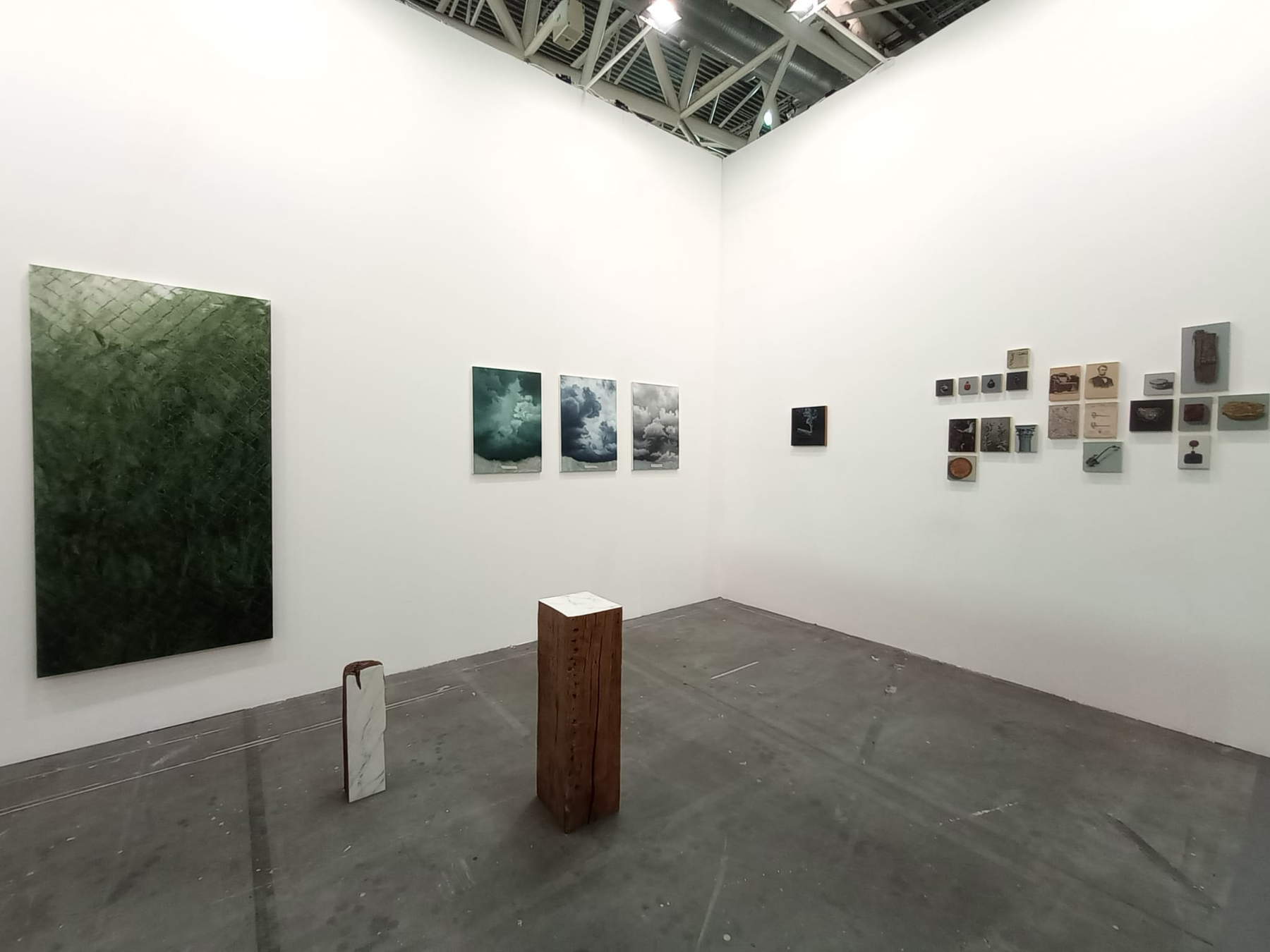

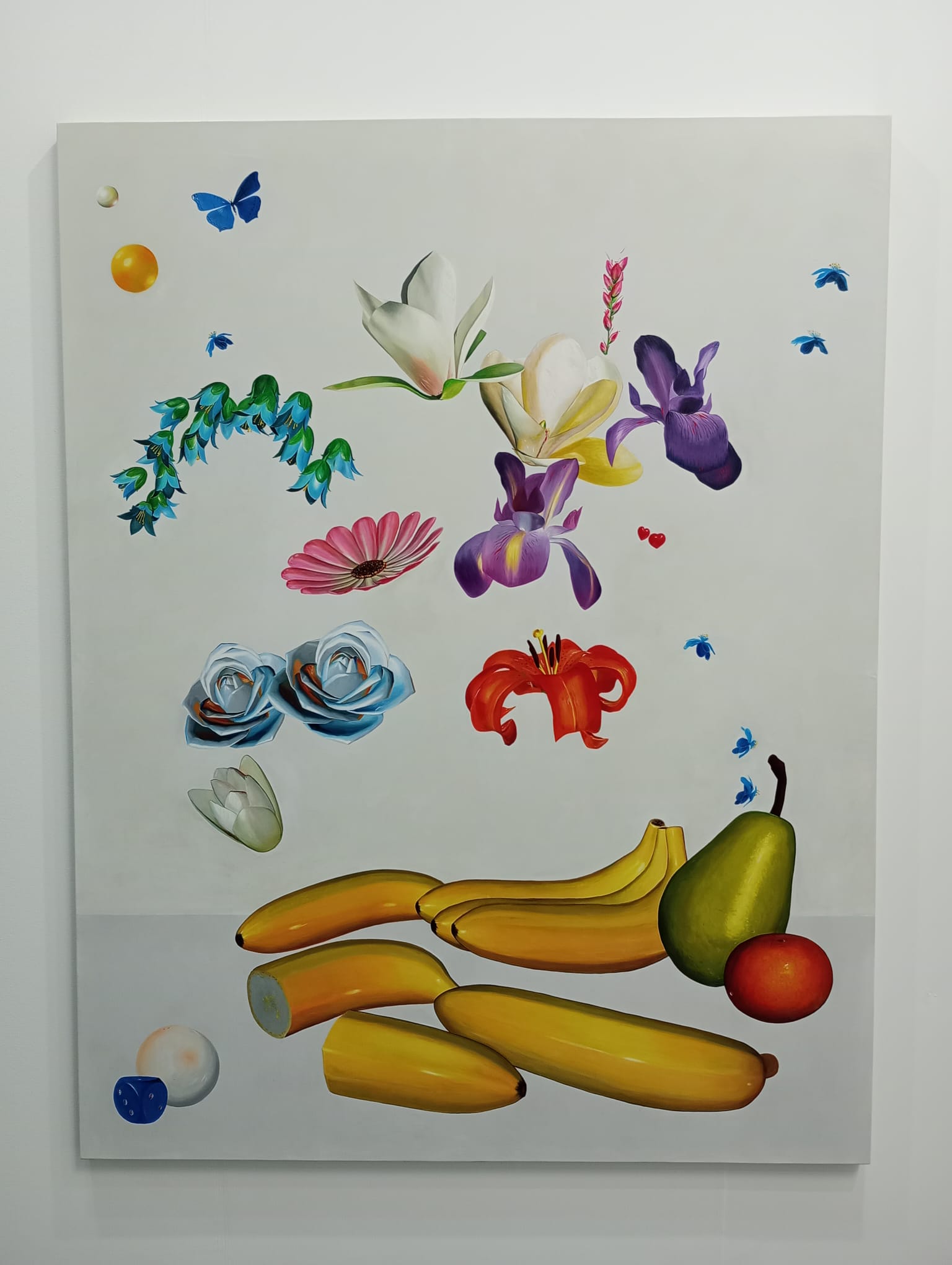
Historicized artists and big names
Historicized artists are confirmed as one of the driving forces behind Artissima. Inevitable is Arte Povera (we are still in Turin) and related research, with Gilberto Zorio’s recent works standing out in the stands of De’ Foscherari and Lia Rumma, Giuseppe Penone and Giovanni Anselmo at Tucci Russo, Giulio Paolini at Artiaco and so on.
Tornabuoni’s has already been mentioned in the paragraph above, and another of the most photographed stands is Benappi’s, which devotes an entire in-depth study to Studio Azzurro. Also notable, though not new, is Dep Art’s booth focused on the research of the German masters-Imi Knoebel, Regine Schumann and Wolfram Ullrich presented in one of the cleanest and neatest booths at Artissima. Moving instead from Germany to France, the works of Anna Boghiguian at Franco Noero stand out as soon as one enters the main entrance of Artissima. As for the big names, of the highest level is Rossi & Rossi’s installation, which brings to the fair a new production by Bertozzi&Casoni: violin cases of all colors. And there is also a Vaso fiorito (Flowering Vase ) from 2022 similar to the one on display at the great monographic exhibition of the Civic Museums of Imola that opened a few days ago. Among the international galleries, China’s Tang stands out, bringing some new works by Jonas Burgert, zodiac animals by Ai Weiwei, and a large painting by Yue Minjun worth €1 million.
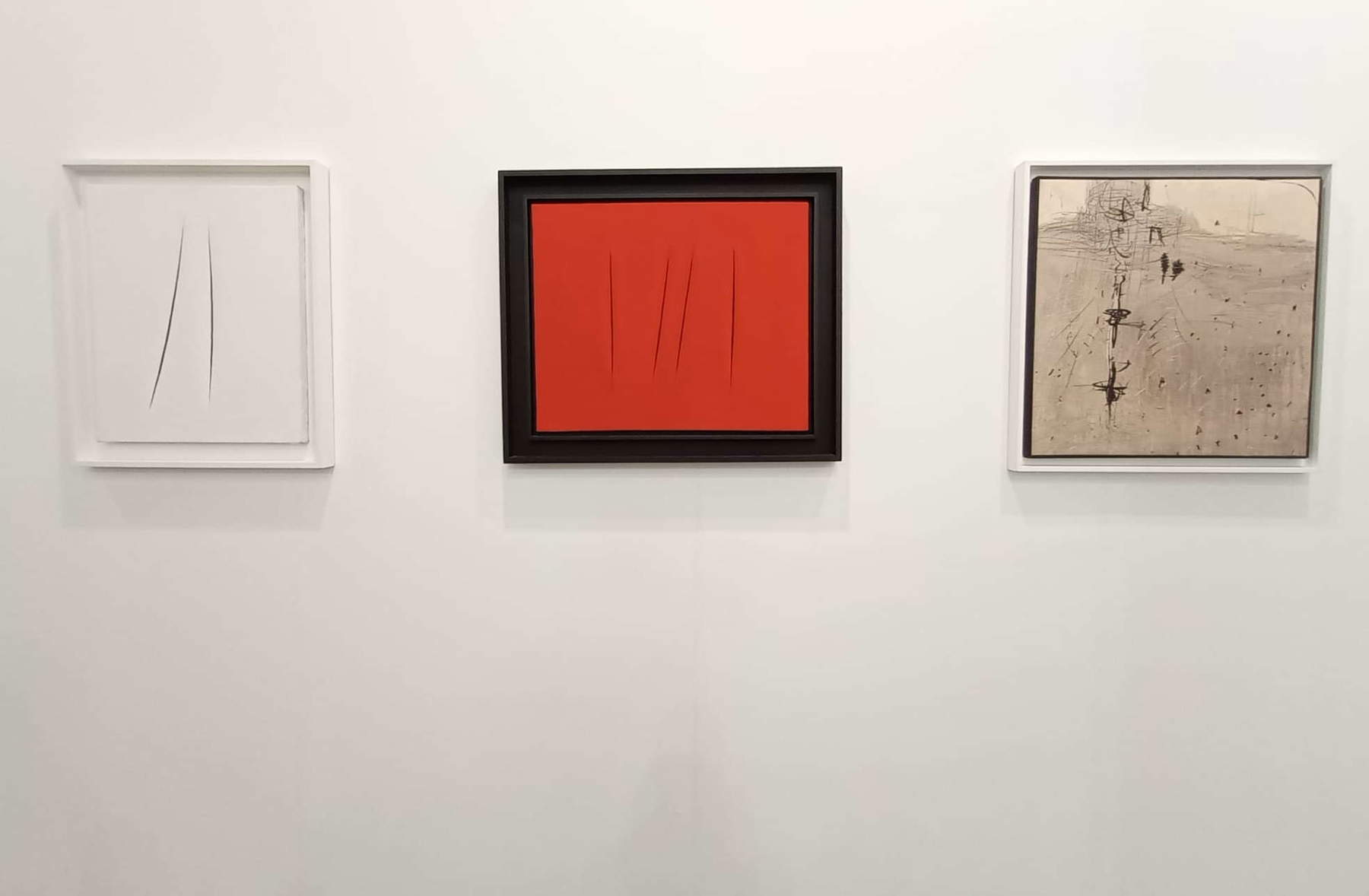
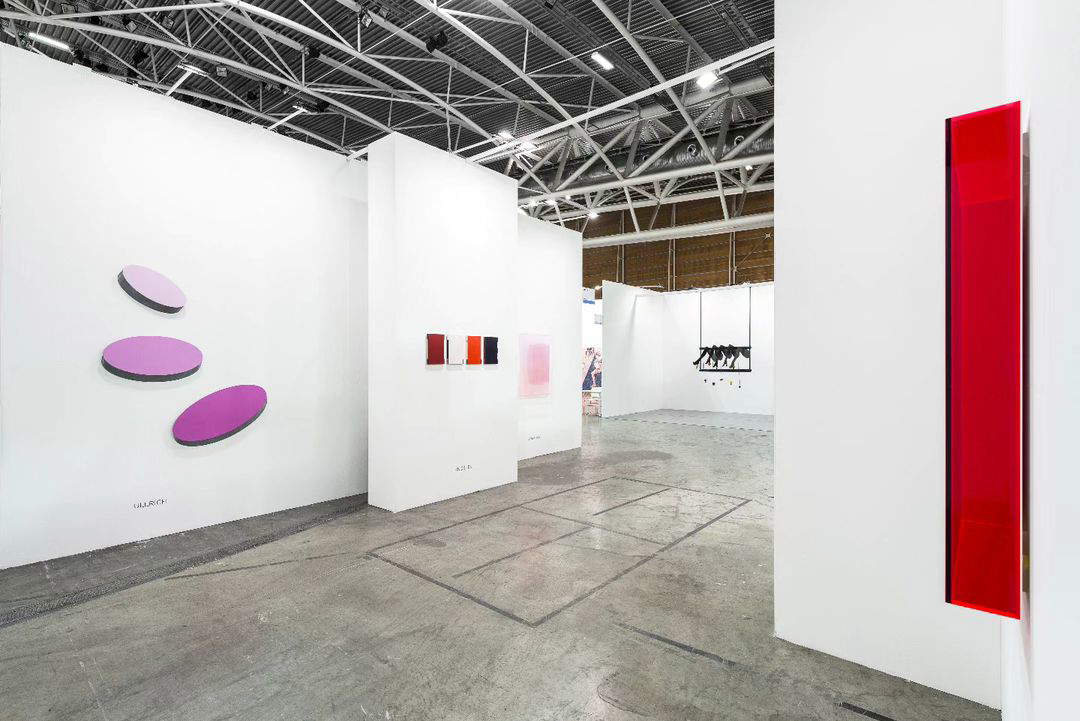
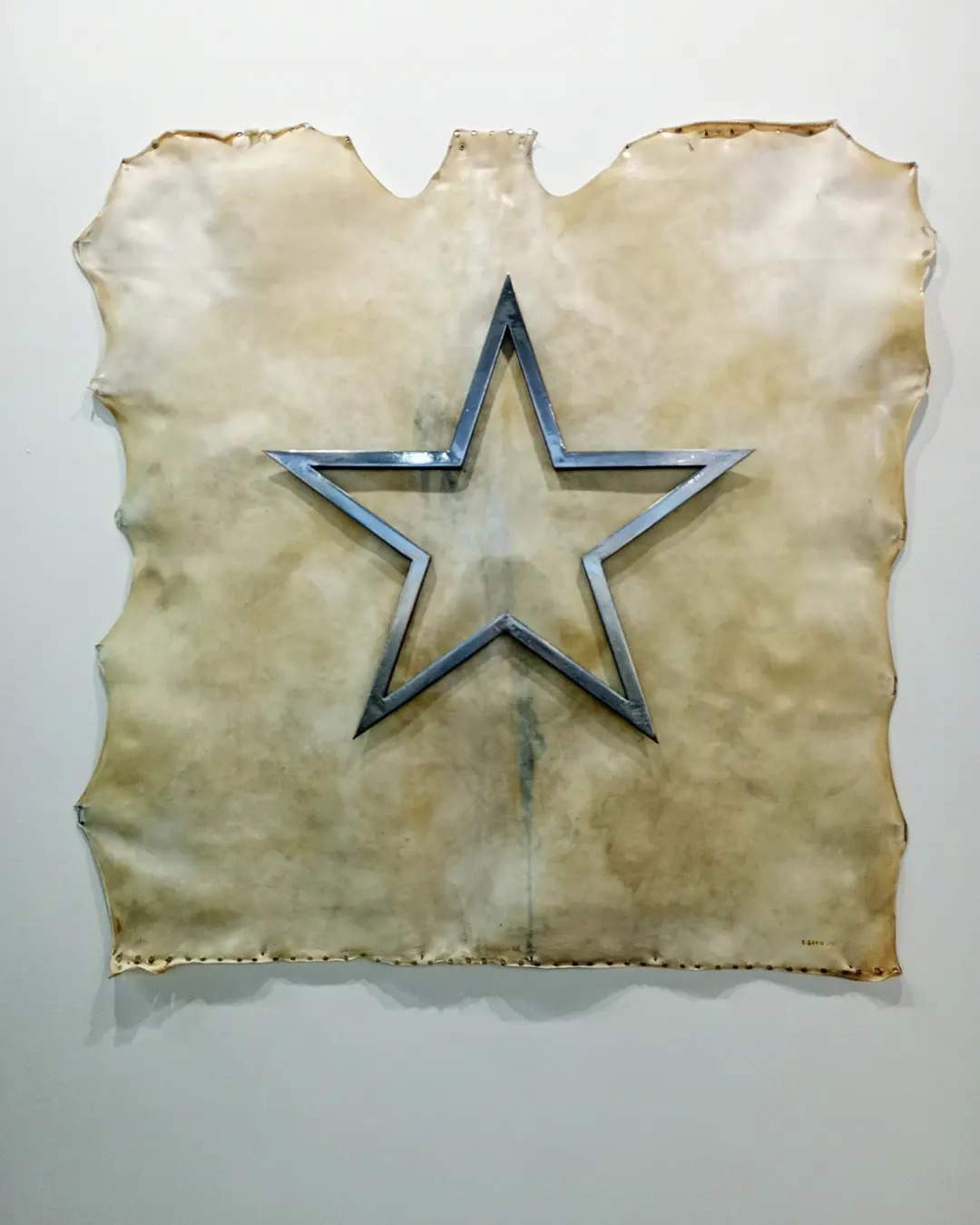
Women and activism
A few commentators noted the presence of so many women artists: in our opinion, it is quite normal that in 2023 art is also female; it is not normal that it should be emphasized. However, it can be emphasized that there is a lot of feminism, although in this respect the proposal seemed to us unconvincing: Studio G7 brings Daniela Comani’s works on feminicide exhibited this year at GNAM in Rome, Studio Sales offers Romina Bassu’s paintings, there is also the eco-feminism of Romina De Novellis who is filmed petting a chicken at Alberta Pane’s booth. One can move on. If one wants truly incisive and overwhelming feminism, one has to turn to the Austrian gallery Silvia Steinek, which offers one of the historical names in world feminist art, that of Renate Bertlmann, to whom it dedicates its entire booth, as part of the Monologue/Dialogue section. If, on the other hand, you want genuine and delicate female creativity, you have to go to the booth of L.U.P.O. Lorenzelli Projects, which brings on display the large oils on canvas by the very young Giuditta Branconi, born in 1998, who pours her intimacy into large-format paintings (at 9,500 euros each from the catalog), another name to keep an eye on.
For other types of activism, there is ample choice. For those who want ecological artists there is a huge inscription by Oliver Ressler consisting of a series of drawings of animals on sheets that make up the words “Property will cost us the earth.” So ecologism in a communist key: this is offered by The Gallery Apart (price is by request). At the Laveronica booth, Guglielmo Manenti offers a mural against the bridge over the Strait of Messina. There is also a performance, a Polish artist, Alicja Brzeska, who at the booth of the Parisian Sante Anne Gallery caresses concrete dogs. In short, those who want “engaged” art will find everything.
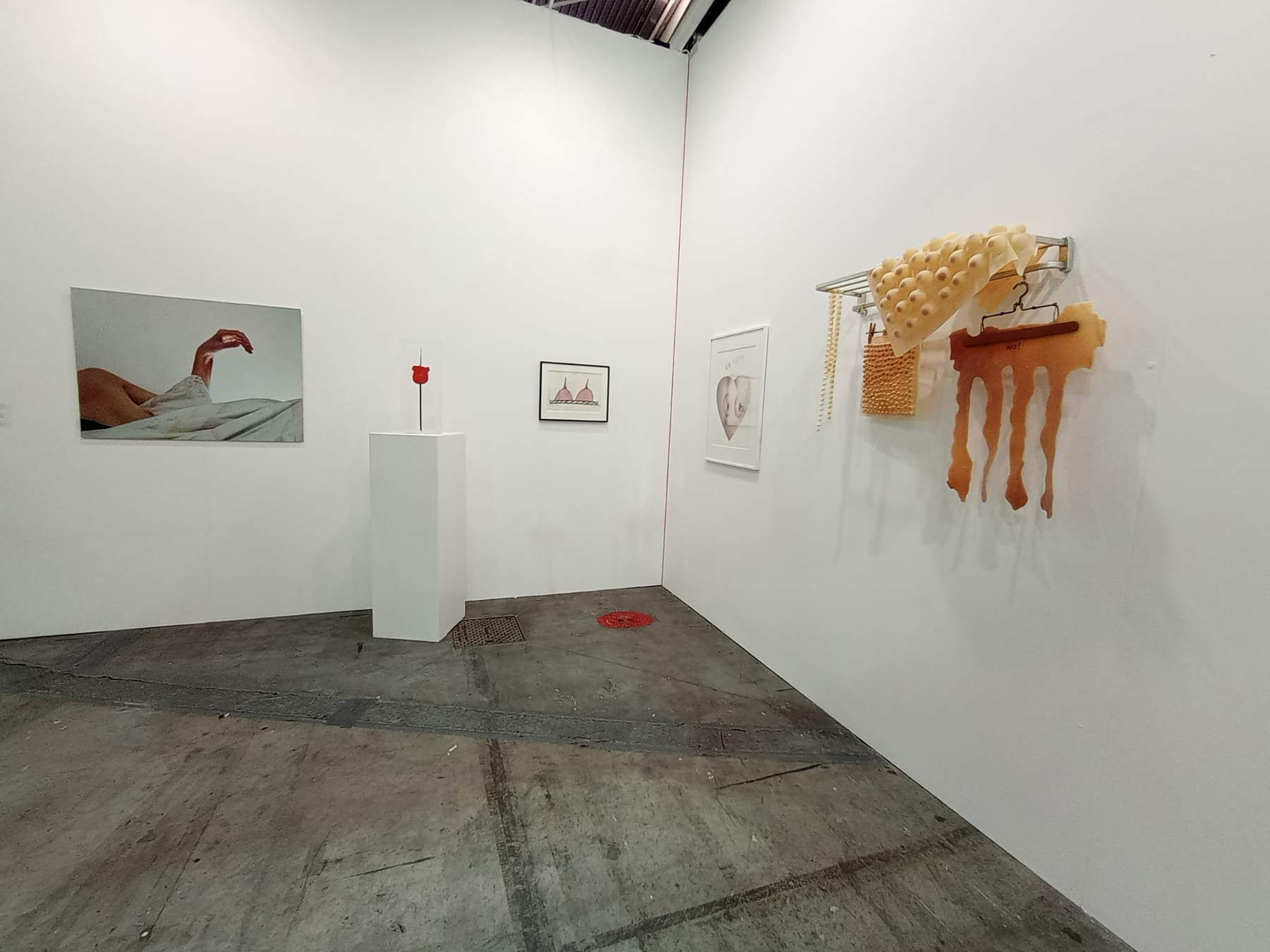
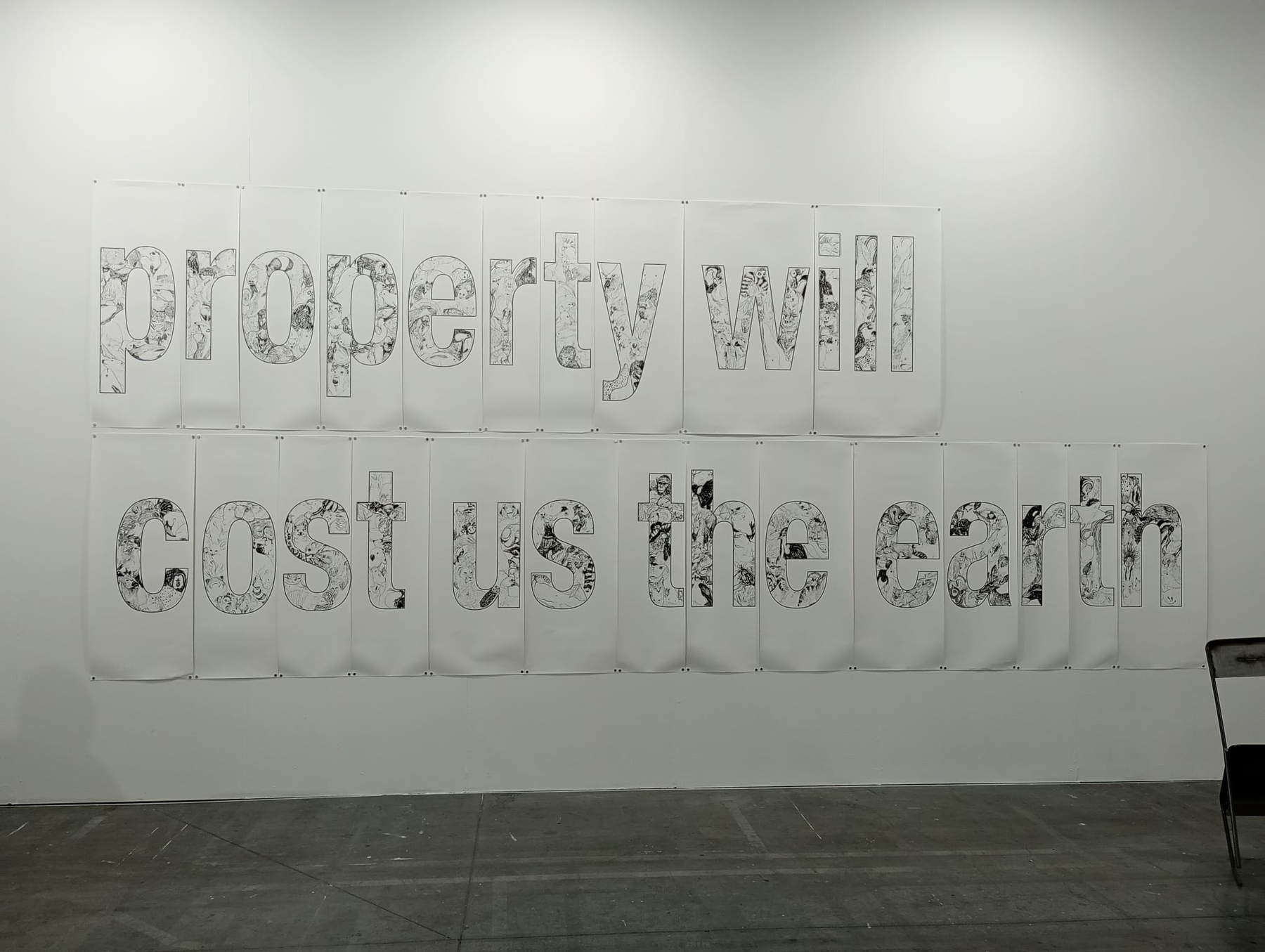

Exoticisms and archaeologisms
Artissima’s passion for art from various continents is confirmed: there is plenty of Africa, from Shamilla Aasha arriving from Zimbabwe with First Floor Gallery in the capital Harare, to the now traditional Africans of Primo Marella Gallery, which brings, among others, Ugandan Godwin Champs Namuyimba, Malagasy Joel Andrianomearisoa, Nigerian Samuel Nnorom and a now-established name like Malian Abdoulaye Konaté. There is South America with Andrea Canepa (who is not a man and not from Genoa, as her name and surname might imply, but is a Peruvian born in 1980) who brings a tent inspired by traditional art from Rosa Santos (filtered, however, through the Kibbo Kift, a group of English campers in the 1920s who wanted world peace). There is Asia with Mongolian artist Bekhbaatar Enkhtur at the Matèria gallery in Rome. There are also those who are adapting: the painter Guglielmo Castelli, one of the most interesting young Italians, in one of his latest works, If opened people I should find landscapes, hints at an unprecedented exoticism, or the Sicilian Barbara Cammarata who sets her paintings in the jungle.
There is no shortage of archaeology fashion either: Augustas Serapinas, on the strength of his recent Roman successes, brings his “fragments of home” to Apalazzo’s booth, Evgeny Antufiev’s mosaics from z2o Sara Zanin (where, speaking of exoticism, Marta Roberti’s self-portraits depicting herself as an Aztec are also noteworthy), Camille Benarab-LOpez’s Signes from Galerie Chloe Salgado (among the cheapest works at the fair: only 300 euros a piece), or Oren Pinhassi’s sand-on-steel-and-stone sculptures presented by Ribot that look like ancient finds.

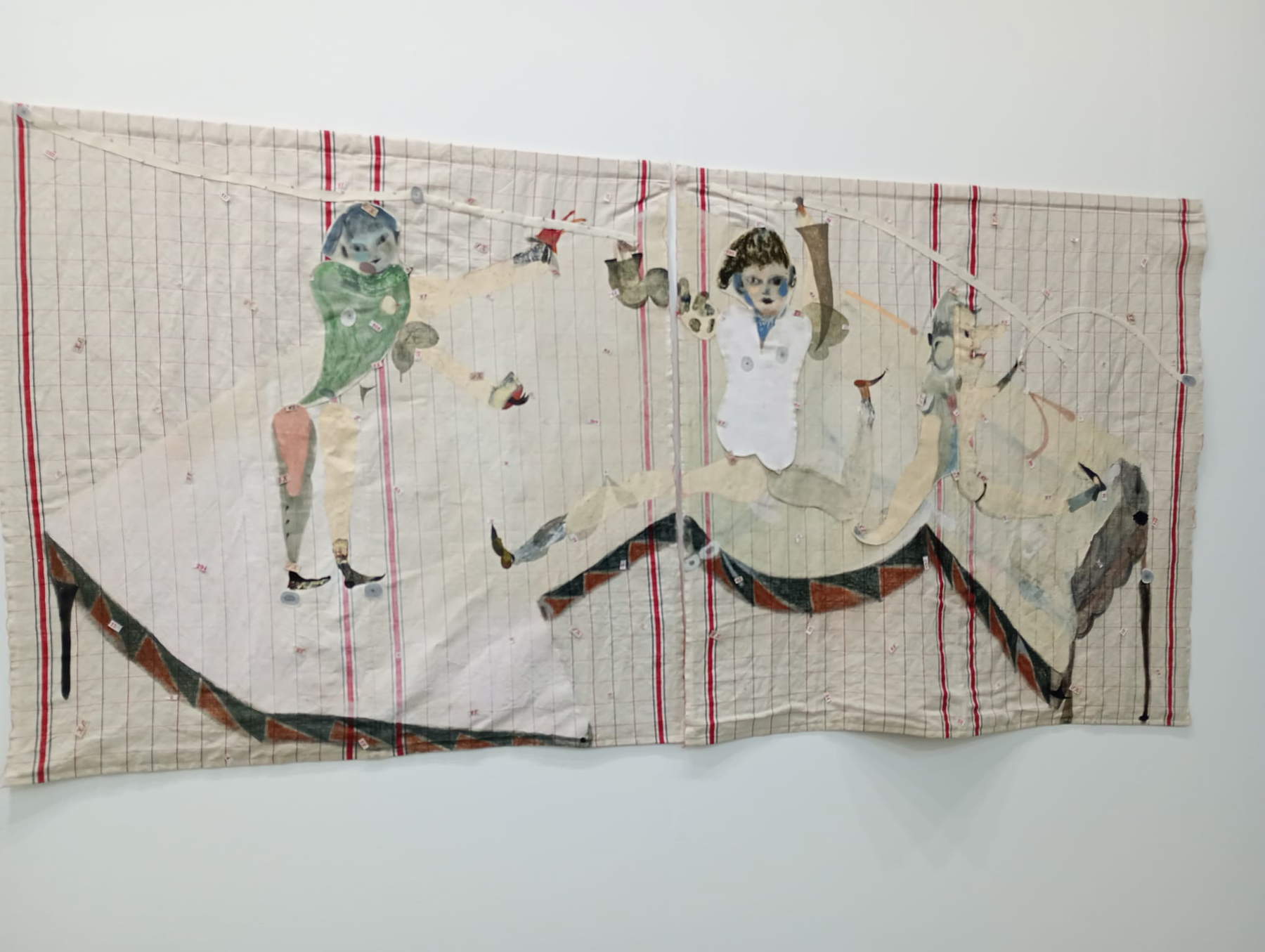
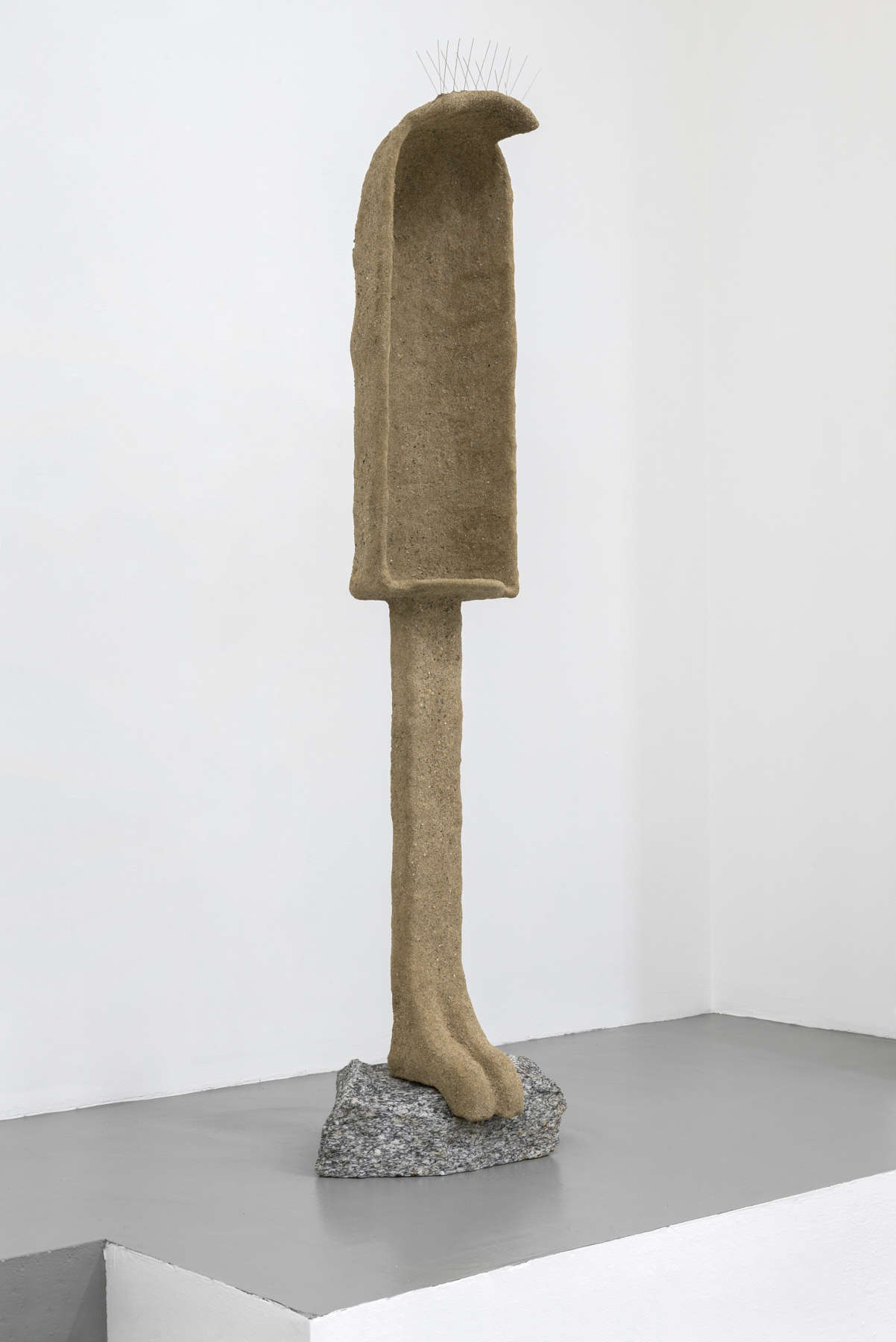
Writings
By law, there is no contemporary art fair without works with writings: they are the most impactful, the easiest, the most immediate, and therefore the most photographed. Gallery Enrico Astuni knows this and every year brings a huge inscription to Artissima: this year the usual Maurizio Nannucci, pioneer of the genre, is joined by Jonathan Monk’s mega inscription Yesterday, Today, Tomorrow, Etcetera , which is immediately in the greatest hits of Instagram and the like. This year, however, the competition is fierce: Ressler’s ecological writing has already been mentioned, then there is Itamar Gov with his Refuge for all Strangers at the Turkish gallery Zilberman, there is Maria Adele Del Vecchio’s writing at Tiziana Di Caro, there is Apparatus 22’s love crusade at Suprainfinit, in short, there is everything.
To be on the safe side with the writings as well, there are the historical artists: for example, Salvo’s Eating himself at Repetto’s, or John Giorno’s works at Thomas Brambilla’s.
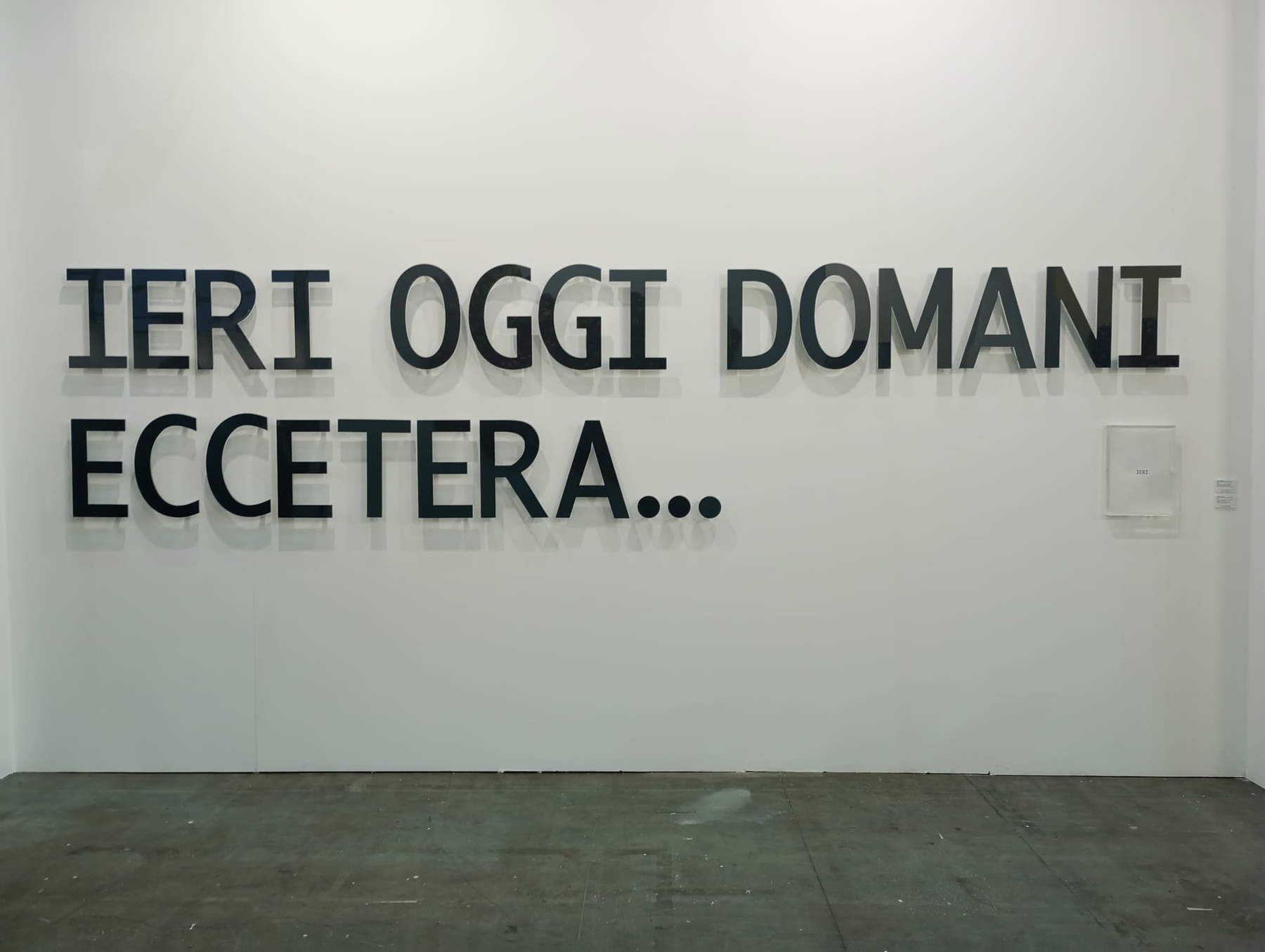
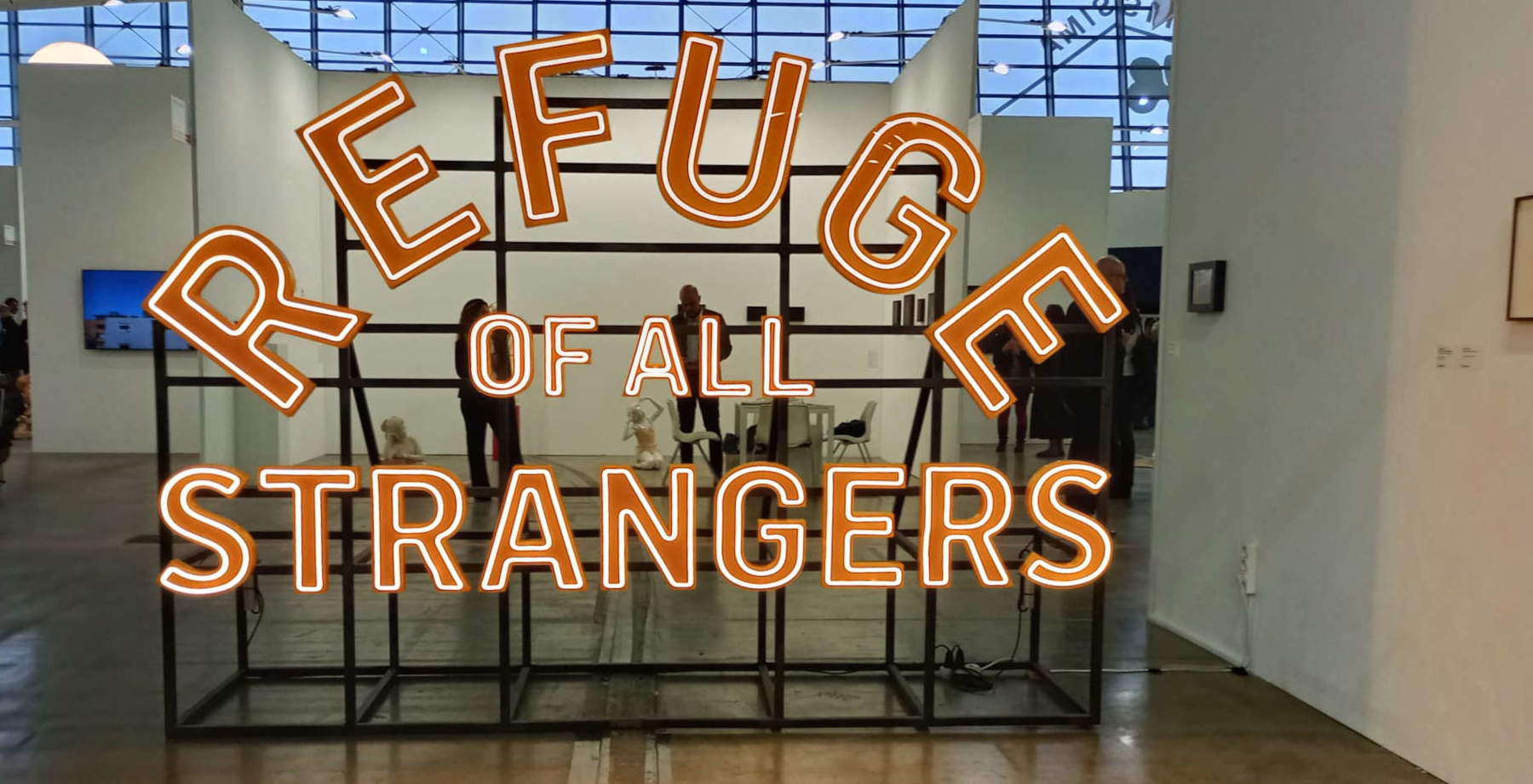

Warning: the translation into English of the original Italian article was created using automatic tools. We undertake to review all articles, but we do not guarantee the total absence of inaccuracies in the translation due to the program. You can find the original by clicking on the ITA button. If you find any mistake,please contact us.





























